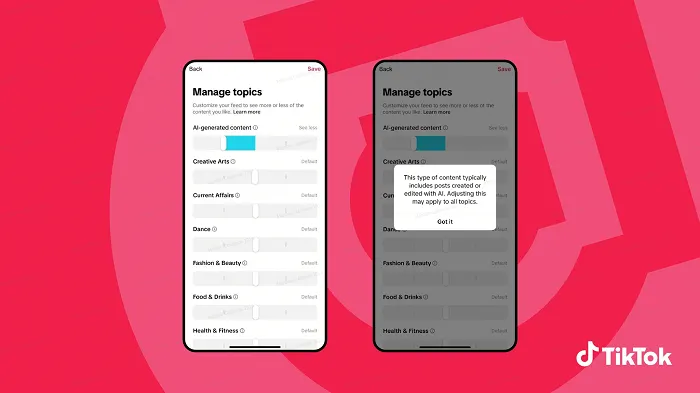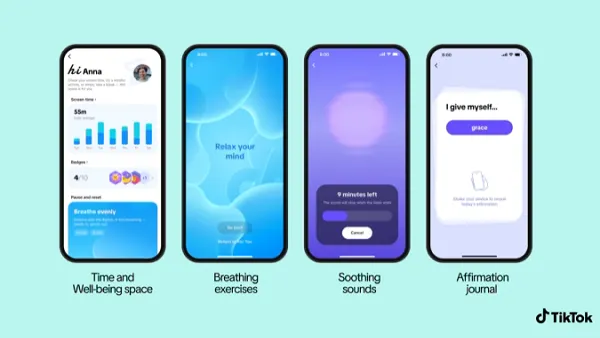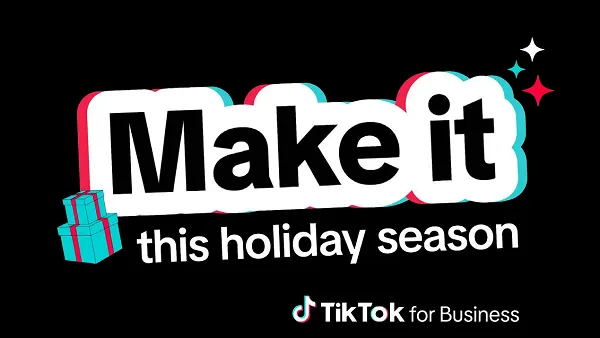TikTok is the latest social platform to add an option to limit the amount of AI-generated content that appears in your feed, with the platform rolling out a new slider in its “Manage Topics” tool that will enable users to indicate that they want less AI slop in stream.

As you can see in this example, TikTok’s adding an additional AI-generated content slider to its Manage Topics control panel, which it first launched back in June. Manage Topics gives users another way to tell the TikTok algorithm about things that they’re not interested in, in order to refine their experience.
And now they’ll be able to limit AI-generated clips through this option.
As explained by TikTok:
“Manage Topics already enables people to adjust how often they see content related to over 10 categories like Dance, Sports, and Food & Drinks. Like those controls, the [AI content] setting is intended to help people tailor the diverse range of content in their feed, rather than removing or replacing content in feeds entirely.”
So now, if you’re sick of seeing weird AI-generated videos with stilted acting, or body-morphing America’s Got Talent performers, you can tell TikTok that you don’t like it, and that should reduce its presence in your For You feed.
Though you will still see some gen AI clips, as TikTok can’t remove them entirely, because TikTok’s detection system can’t pick out every generative AI clip.
Which it’s also working on. TikTok is also testing "invisible watermarking" on gen AI videos, which will help determine when AI has been used in creating a clip.
“Over the coming weeks, we'll start adding invisible watermarks to AI-generated content made with TikTok tools like AI Editor Pro, and content uploaded with C2PA Content Credentials. The watermarks will help us label content more reliably, and give us more context around changes made to content.”
TikTok says that it already requires users to label realistic AI-generated content, while it also uses C2PA Content Credentials to identify AI-generated content, and label it in-stream. But these measures don’t work when videos are cross-posted, and these additional markers are not included in the metadata of the clip.
TikTok’s hoping that broader adoption of invisible watermarking, along with C2PA, will enable better tagging of AI content, which will then improve its capacity to limit such when users opt out of seeing AI clips.
Which is an interesting shift.
Pinterest also recently added AI content restrictions, so that people can opt out of seeing AI slop in their social feed, and with TikTok following suit, it seems that audience enthusiasm for gen AI content isn’t meeting the expected demand that many developers had anticipated.
Meta has repeatedly forecast a future where more and more of our social feeds are dominated by AI content, with even your friends set to become more populated by AI bots, giving you alternative social opportunities.
Indeed, Meta believes that AI content will eventually take up the majority of slots in your social feed, and that people will, for some reason, like this, and prefer gen AI updates over human interaction.
Of course, if I were spending hundreds of billions of dollars on AI development, I’d be pretty keen to paint a rosy picture of its potential as well, but thus far at least, users have not shown the same interest in artificial visuals and video, even as it becomes more and more realistic in its depictions.
AI will become more commonplace over time, and maybe that will lead to more widespread adoption and interest. But social media, in particular, is designed to be just that, “social,” a feed of updates from the people you know, and a means to stay connected with other humans.
I don’t see AI bots replacing this, and as such, I don’t see there being widespread demand for AI content within social feeds any time soon.
The fact that the platforms themselves are now adding in AI content controls underlines this, though again, maybe this is just early resistance, and the next generation of users, who'll grow up in a world where gen AI has always existed, will see things differently.
In any event, right now, there’s clearly demand for AI content controls, and you can expect to see other platforms monitoring the popularity of such, with a view to potentially adding their own similar control options.
I mean, really, half the Facebook user population should have this on by default, because the amount of times that I’ve seen people sharing AI content on Facebook, convinced that it’s real, is scary.
Either way, it’s another interesting indicator of the take-up of AI, and resistance to gen AI elements in social feeds.
In addition to its new controls, TikTok is also launching a $2 million fund to pay experts to create TikTok content that teaches people about AI literacy and safety. TikTok’s also sponsoring Partnership on AI to support its work into responsible AI development.
It could be a blip, or it could be a trend, and it’ll be interesting to eventually get some data on how many users are switching off AI content in their feed.










